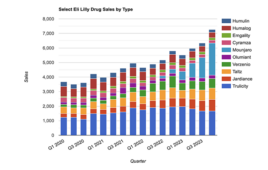When researchers look inside human cancer cells for the whereabouts of an important tumor-suppressor, they often catch the protein playing hooky, lolling around in cellular broth instead of muscling its way out to the cells’ membranes and foiling cancer growth.
This phenomenon of delinquency puzzled scientists for a long time — until a cell biologist in the Johns Hopkins University School of Medicine felt compelled to genetically grab the protein by the tail and then watched as it got back to work at tamping down disease.
‘It was curious that when we removed its tail, the protein suddenly was unhindered and moved out to the membrane and became active,’ says Meghdad Rahdar, a graduate student in pharmacology.
The discovery represents a potential new approach to cancer therapy, according to Peter Devreotes, Ph.D., professor and director of cell biology at Johns Hopkins.
‘A long-term goal is to find a drug that does the equivalent of our bit of genetic engineering,’ he says.
The flexible tail contains a cluster of four amino acids that regulate this tumor suppressor known as PTEN. When chemically modified, these amino acids act to ‘glue’ the tail back to the body of PTEN and prevent the attachment of PTEN to the membrane. By genetically removing PTEN’s tail, or manipulating the cluster of four amino acids so that they cannot be modified, the researchers persuaded PTEN to move to the cell membrane where it goes about its tumor-suppressing business of degrading a molecular signal called PIP3 that causes errant cell growth.
‘As far as I know, I haven’t seen anyone activate a tumor suppressor, but we seem to have done it genetically,’ Rahdar says.
While genetically engineering cancer cells in the human body is neither practical nor safe, manipulating such unbinding of PTEN with drugs is a viable alternative to guard against cell overgrowth, the hallmark of cancer, the Hopkins scientists say.
In many tumors, PTEN is simply not present. In others, it’s there, but a key enzyme that produces PIP3 is over-activated. The Hopkins team already has shown the first evidence that adding the modified PTEN to cells that lack PTEN not only restores normal enzyme levels but ramps up PTEN activity and quells the cell growth signal.
Release Date: December 30, 2008
Source: Johns Hopkins Medical Institutions
Filed Under: Drug Discovery




